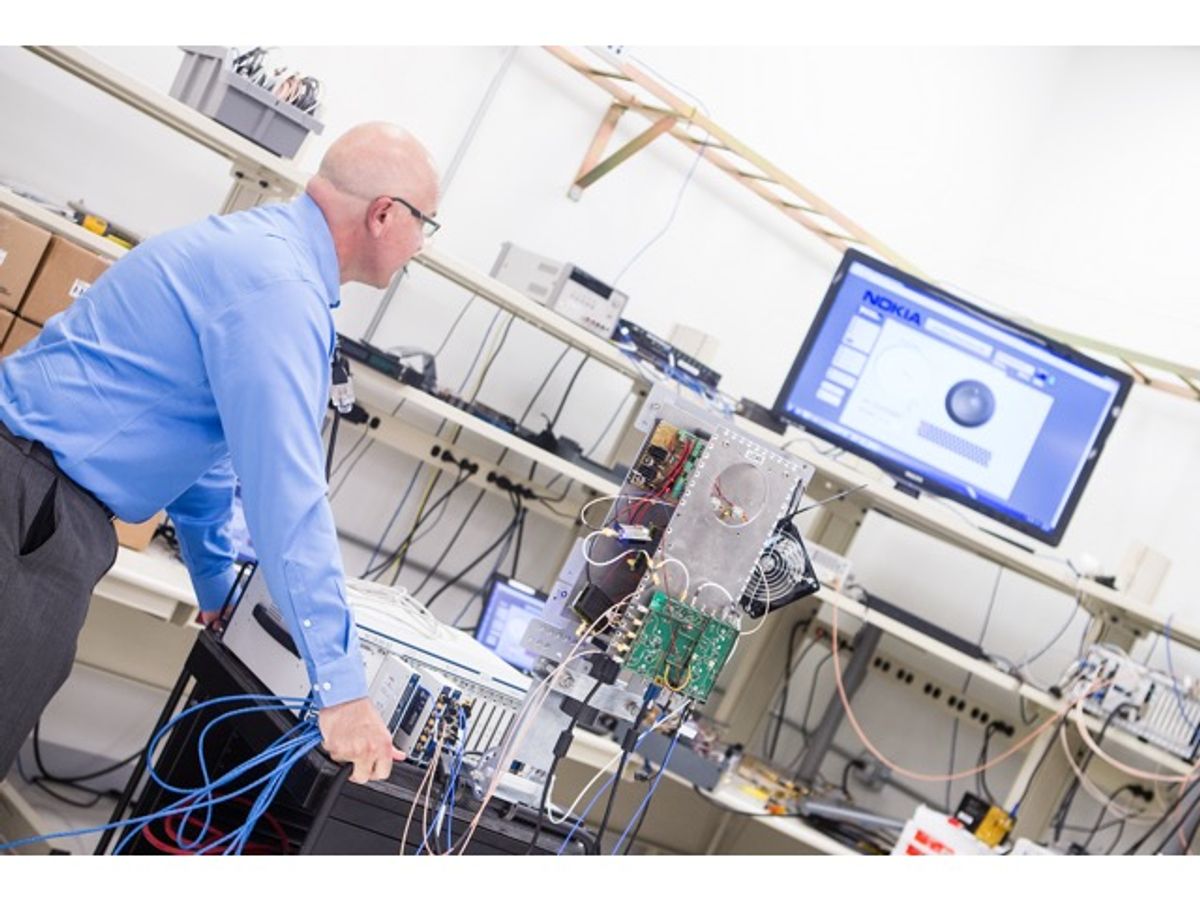The 5G New Radio (NR) standard is here, and it's being tested and trialed right now. As such, the advent of the 5G (fifth generation) standard marks a new turning point in how these ultra-reliable and low-latency wireless networks are going to be prototyped and tested.
Primarily driving the 5G design landscape are higher data rates, wideband signals, lower latency and component miniaturization. That, in turn, leads to unique prototyping and channel measurement demands.
How does all of this impact the RF test and measurement landscape? Here is a sneak peek into the factors that are influencing 5G equipment testing and validation.
1. Software-Defined Testing
The test and measurement industry, which has traditionally relied on hardware-centric benchtop instruments, is now more inclined toward a software-defined approach in order to create flexible and efficient test sets for 5G systems that comprise highly-complex RF designs.

First, software modules allow engineers to quickly develop test programs for multiple 5G technologies and standards. These test sets, which can quickly adopt new 5G specifications through software, are also able to accelerate 5G prototyping and deployment.
Second, a software-defined approach helps future-proof test programs for tomorrow's demanding 5G challenges. For instance, the 5G NR prototyping that has been carried out for massive MIMO, mmWave, channel sounding and waveform development via reprogrammable instrumentation tools.
2. System-Level Approach
It's worth mentioning that while the software footprint is expanding in the 5G test and measurement realm, it doesn't preclude the hardware element. In fact, a combination of hardware and software can significantly help in rapidly prototyping new 5G standards such as NB-IoT and eMTC.
For a start, a system-level approach is critical in managing the incredibly complex antenna architectures and multi-channel RF designs in 5G systems. Here, a combination of instrument, software, and services can help test and measurement professionals tackle engineering challenges from different parts of the workflow—especially when 5G technologies are at a nascent stage and standards are constantly evolving. A turnkey test set can also efficiently hide the complexity that is inherent in RF-heavy 5G designs.
3. From Cable to OTA
Testing 5G is a technology in transition, and a harbinger of this shift is the adoption of over-the-air (OTA) test methodologies instead of attaching the device under test (DUT) via cable.
In addition, 5G designs are taking miniaturization techniques like system-in-packaging (SiP) to a whole new level. So how do you test a module that integrates a power amplifier, low-noise amplifier (LNA), transceiver, and antennas? Not surprisingly, OTA testing is quickly emerging as a cable replacement.

OTA testing is a new frontier for test and measurement companies, and in the 5G context, it encompasses engineering challenges such as handling variability among components like antenna modules, wireless transceivers, and power amplifiers. Then, there are stumbling blocks related to OTA testing of 5G technologies such as beamforming that employs multiple antennas.
However, OTA is becoming an intrinsic part of the emerging 5G test paradigm. When Verizon demonstrated the "5G Specification" at 28 GHz back in March 2017, it included an OTA prototype based on National Instruments’ mmWave Transceiver System and phased array antennas developed by Anokiwave and Ball Aerospace.
National Instruments (NI) developed their part in this commercial 5G field trial by using LabVIEW software; the OTA prototype featured fully modifiable real-time code for the base station and the user equipment (UE).
More 5G Test Demos
Verizon's field trial, the first commercial deployment of a 5G millimeter-wave technology, employed the OFDM transmission with eight component carriers set up in a 2 x 2 downlink MU-MIMO configuration with hybrid beamforming and a self-contained subframe. It offered a 5 gigabits per second (Gbps) peak throughput and scaled to over 20 Gbps speeds with eight MIMO streams.
A demo of more recent technology, 5G NR, was on display at the Mobile World Congress (MWC) 2018 show floor in Barcelona. Samsung, the 5G equipment supplier, teamed up with NI to demonstrate the interoperability device testing (IODT) between the 5G base station and the UE device.
Samsung's NR-capable base station establishes a communication link with a test UE developed by NI and validates the downlink functionality and performance specified by the 3GPP (3rd Generation Partnership Project). The test UE is based on NI’s 28-GHz mmWave Transceiver System and a protocol stack — compliant with 5G NR Phase — developed using LabVIEW software.




